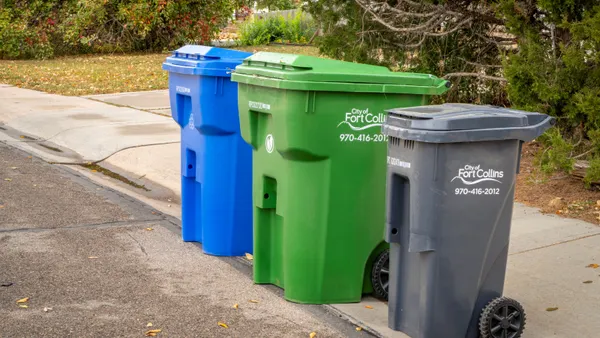Dive Brief:
- Singapore sends only 2% of its solid waste to landfill, burns 38% of it to generate electricity and recycles the remaining 60%, making the wealthy island city-state of 5.1 million people a model for cities worldwide.
- In 2000, Singapore was generating 7,600 tons of waste a day — nearly six times as much as 30 years earlier — causing onshore landfills to reach capacity. Beginning in 2001, the government built a landfill on the island of Semakau on land reclaimed from the sea; waste sorting and recycling was introduced for residences; and a recycling program was introduced for schools, offices, shopping malls and industry.
- Singapore also turned to waste incineration, which both reduced the volume going into landfills and produced electricity. Four waste-to-energy plants account for almost 3% of its electricity needs, and a fifth plant will be in operation by 2019.
Dive Insight:
Eugene Tay, executive director of the Singapore-based nonprofit Zero Waste SG, told The Wall Street Journal that Asian megacities can learn a lot from Singapore. "They need to step back and emphasize on the ‘reduce’ and ‘reuse’ part of the cycle, and then look at disposal as a final option," he said.
The U.S. fares poorly by comparison, as well. The U.S. sent 53% of its solid waste to landfills in 2013, recycled 34% of waste and converted 13% into electricity, according to the Environmental Protection Agency.
As Singapore advances its waste management efficiencies even further, the North American waste and recycling industry may want to take note of its practices to achieve a similar path.








